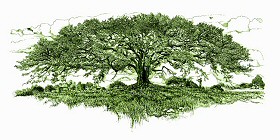The Basics of Tree Pruning
MERISTEM
TIPS :: VASCULAR
SYSTEM :: TRANSPIRATION
:: THE 1/3 RULE
THE BRANCH COLLAR
:: TARGET PRUNING
:: CONCLUSION
:: GLOSSARY |
Canopy
reduction is often needed to preserve a tree, when site conditions
limit its size.
The 1/3 rule is a way to determine if there will be enough meristem
tips left to maintain sap pressure after a pruning cut is made.
|
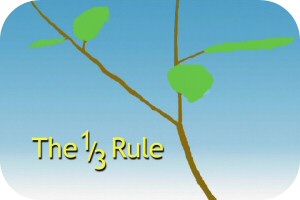
|
We
see in this representation of a tree, we have a leader compounding
into two laterals. A legitimate cut of reduction would be
to eliminate one of the two laterals. One must leave a branch
at least one third the diameter of the former leader in order
to maintain the sap flow and the energy flow all the way to
the branch tips.
|
|
Leader
B is at least one third the diameter of stem A, so this could
be considered a legitimate cut, and the tree will continue,
and sustain, and heal the cut.
|
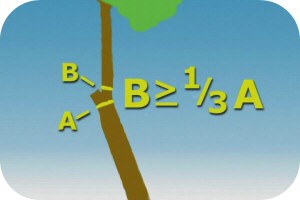
|
|
The
1/3 Rule is a general guideline, and does not apply in all situations.
Sensitive species such as birch and citrus may require more delicate
treatment. Of course, the more you know about your tree, the more
successful your management efforts will be. |
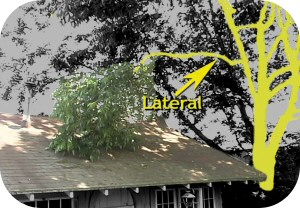
|
Now
let’s return to our example tree, where we would like
to remove a large lateral in contact with the nearby roof,
with-out endangering the tree’s health.
|
|
We
see that the leader is at least one third the diameter of
the lateral, and we can remove the branch that is interfering
with the roof, with the expectation that the tree will heal
the wound.
|
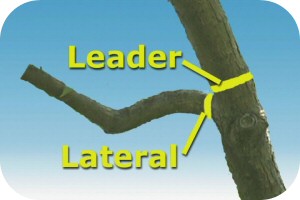
|
|

|
When
we first observed the tree, we saw a branch that was a potential
hazard to the house.
|
|
We
removed the limb at the branch collar, following the one third
guideline.
|
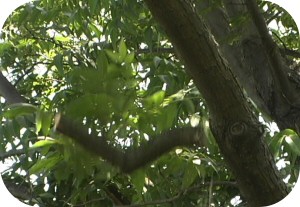
|
|
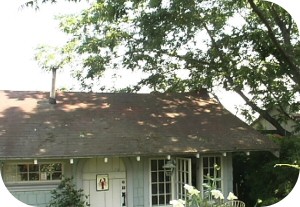
|
In
that way, we maintained the form and health of the tree, and
sent it into the future.
|
|
|
